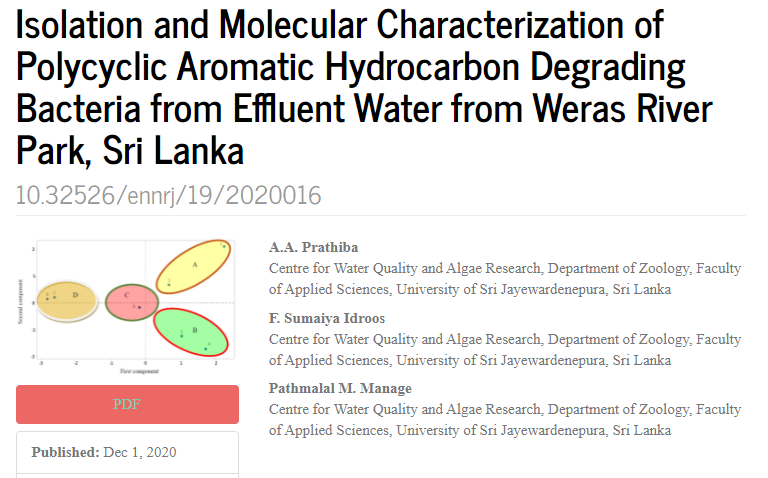Authors: A.A. Prathiba, F. Sumaiya Idroos and Pathmalal M. Manage
Journal: Environment and Natural Resources Journal
The present study records the detection of PAHs such as naphthalene and anthracene and isolation of PAHs degrading bacteria from a restaurant site, Weras River Park, in Boralesgamuwa, Sri Lanka. Water samples were collected in seven locations of the study area. Water temperature (oC), pH, and electric conductivity (EC) were measured at the site itself using standard meters. Nitrogen nitrate (N-NO3-) and total phosphate (TP) were measured at the laboratory following the standard methods. Following the extraction of PAHs in collected water samples, detection was carried out using the PDA-HPLC diode array method. PAH degrading bacteria were identified using microplate assay. The selected bacteria strains were subjected to degradation kinetic studies following molecular identification by 16S rRNA analysis. Phylogenetic analysis identified Achromobacter spanius as potential naphthalene degrading bacteria, where Alcaligens faecalis was recorded as an anthracene degrader. Degradation study confirmed that A. spanius efficiently degraded naphthalene at the rate of 0.145±0.002 ppm/day, whereas A. faecalis degraded anthracene at the rate of 0.181±0.036 ppm/day, respectively. Degradation of structures of the Naphthalene and Anthracene by A. spanius and A. faecalis was further analyzed by Fourier Transform Infrared Spectroscopy (FTIR). This is the first record on naphthalene degradation by the bacterium A. spanius.


